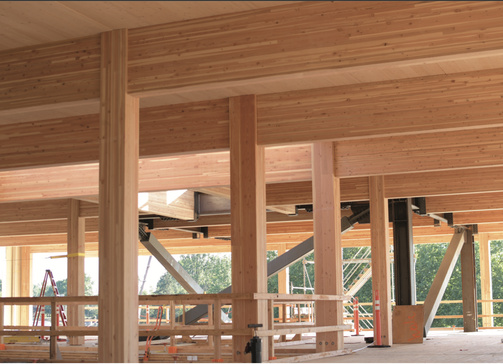A Growth Market:
The Power of Forestry to Combat Carbon Emissions Is Going Mainstream
By Elizabeth Lenhard
Summer 2020
Summer 2020
|
Construction Industry Turns to Mass Timber
The construction industry is beginning to go green by using the large, versatile wood panels known as mass timber in place of less sustainable materials. “Construction is not quick to adapt,” admits Casey Malmquist, founder and CEO of the cross-laminated timber (CLT) producer SmartLam North America. “And a lot of this is counterintuitive—building a skyscraper out of wood. But there’s been an increasing awareness of the need for sustainability, particularly on the carbon piece, so people are looking at it more realistically and enthusiastically. If you look at projections, by 2034, there will be a need for 50 or 60 plants of similar capacity to the two we have now.” Where developers are going, governments are following. The federal government included the Timber Innovation Act in the 2018 Farm Bill. The act grants support to mass timber construction. And in the Georgia legislature, House Bill 1015 expands the state’s carbon registry, allowing carbon credits to be tied to carbon-sequestering construction projects. (The bill has not yet passed the senate.) All this investment in forests comes from consumer demand, says Deron Davis, executive director of The Nature Conservancy in Georgia. “We’re looking to the products that we buy to be produced in a more sustainable way,” he says. And corporations who don’t raise the bar when it comes to Environmental, Social and Governance (ESG) standards, Davis points out, are no longer going to be able to compete with those who do. “The number of forest acres and the amount of carbon offset by keeping those acres in management longer—all that is quantifiable,” he says. (Extending the growth period to maximize carbon sequestration is one goal of the Working Woodlands program.) “It’s quantifiable with money, which helps the landowner. But you can say the value is not only to climate and reducing emissions but also to the community or the state where you live and work. And that covers more than one of the ESG objectives.” |

|
Georgia Forestry Magazine is published by HL Strategy, an integrated marketing and communications firm focused on our nation's biggest challenges and opportunities. Learn more at hlstrategy.com
|
